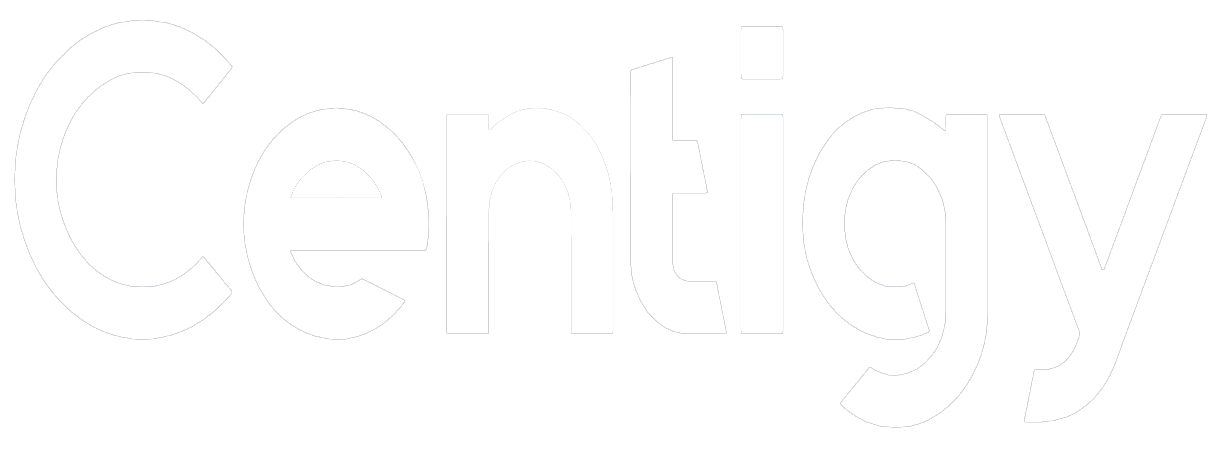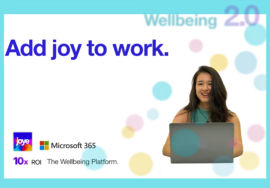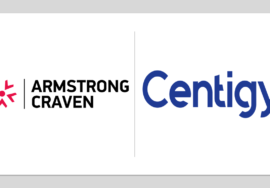
HR Tech that can support working from home
This article discusses the impact on the workforce from the mass disruption induced by the Covid-19 pandemic by reference to recent interviews with 50 HR Tech providers. The aim of this article, supported by this research, is to present use cases for HR Tech that can support working from home (WFH).
Disclaimer:
The author, Centigy or London Tech Advocates do not endorse or have any sponsorship agreements in place with any of the software vendors mentioned in this article. You will notice there are no referral hyperlinks embedded. We have only included examples of vendors to be helpful. Please be advised to conduct your own due diligence when selecting software and/or engage with a vendor selection specialist before making your final decision. Software is not one-size-fits-all and must be assessed on an individual basis.
Introduction
With the events of 2020 upending so much of what we took for granted, we now need to look ahead to help each other overcome recent challenges, and to find a solution that meets our own terms. According to Accenture’s Fjord Trends 2021, “businesses will need to understand people’s new context, empathize with the way they feel, and provide the tools to let them “hack” their own solutions.”
One of the reasons for which 2020 has been difficult for many is the disruption to the rituals we base our life around – birthdays, weddings, Christmas, holidays etc. On a smaller scale, but just as important, are our portals to work: the coffee you pick up from your local barista or the “morning exercise” on the flight of stairs you take at the train station. These days, we wake up, check our phones and we’re immediately in the office, with no transition.
We have experienced mass disruption. Working, learning, parenting and socialising have changed almost overnight for many of us. We have had to find innovative ways to adapt to our changing environment. From using an ironing board as a standing desk to using a bookshelf for yoga equipment storage, we are getting better at repurposing existing tools. When adapting the workplace environment, the same question comes up. Should we repurpose our existing HR software tools to provide a better service to our people? Do we need something new?
For those who are working from home, the new work routine can feel like living in the office. This is having a huge effect on the agreement between employee and employer. Who has the final say in what people wear in their own homes? Whose responsibility is it to preserve the right to privacy? The workplace is rapidly becoming a mindset supported by technology.
As HR professionals well know, the employee experience will vary in different organisations and even in individual teams. This was the case before the pandemic. Our challenge is even greater now. This is where the talent function has the greatest opportunities. For now, the future of work is unclear. We are entering an era of prototyping as we are trying to decide how best to go ahead.
The experience we have with work applications is constantly being compared to consumer applications. Why is that the apps on your phone or TV work flawlessly, while logging time on your internal work system feels slow and clunky? It’s not a major problem for most but when you add this poor experience to the other drawbacks of working from home and it may become a problem. The systems we use and their user-friendliness are becoming increasingly important. People demand more from their screens now.
Luckily, there are a myriad of HR tools on the market that can be deployed in just a few weeks that provide instant value while looking and feeling great. With free trials, short-term contracts and rapid deployments on offer it has never been easier to get started with new software. We no longer need to spend 6 months on a selection process either. Therefore, the barrier for entry is the lowest it has ever been, and the onus is now on the vendor to keep the customer happy – so that the contract is renewed in 12 months’ time. It is a buyers’ market.
Use cases and examples of HR Tech that can support WFH
With these WFH trends in mind, we present below some of the possible solutions, with a focus on engagement, learning and development, and wellbeing software.
Not that long ago, employee engagement was a hot topic. SuccessFactors built their business case around improving it. They claimed that by using SuccessFactors for performance management, you could improve engagement. By increasing engagement, they forecasted a 1% improvement in profit. The theory goes that if people do a better job and they stay with the company a little longer, the company will make more profit. This sales story seemed plausible. SuccessFactors became a major player in the HR information system market and were promptly acquired by SAP for $3.5 billion in 2011. Not long after, every talent management SaaS vendor claimed to increase engagement too. Results varied. Eventually, we grew tired of the preoccupation with engagement, and it drifted like every fad before it. However, this “buzzword” is important. Engaged workforces do outperform their competitors. As many of us found out, though, increasing engagement is not as simple as buying fancy software and providing access to your people.
The added challenge for organisations now is engaging and keeping engaged the remote workforce. One of the trusted methods is to engage with them. If you engage with your people you can improve their sense of belonging. Do your people share the same values as the organisation? If they do, chances are they will feel they belong there. Giving attention to your people in the office was far less challenging than things are today. Luckily enough, there are plenty of tools on the market that can help. Some will purely measure engagement via surveys; some like Achievers will enhance an individual’s sense of belonging through recognition, some will provide actionable insights and others like Infeedo’s chatbot will quietly work away in the background improving engagement by pro-actively checking in on new hires throughout their first budding months in an organisation.
Chatbots (‘assistants’ or ‘conversational AI’ as many vendors prefer to call them), represent a quick, low-risk win for many organisations. Among the many benefits, they can reduce the HR team’s administrative burden, reduce time to hire and increase development and retention. There are hundreds of chatbots on the market but, of course, not all chatbots are equal. They come in various levels of speed, intelligence, and depth. Some are only designed to be point solutions. Meaning they handle one stage of the employee lifecycle. Others, like Paradox claim they can be configured to be the employee’s assistant throughout their entire lifecycle with the company. It remains to be seen if a world of automated hiring to firing via AI automation is the direction we should be heading in. However, in reality, these assistants work best as an option for an organisation’s people, and not the default setting.
One of the little talked about benefits of chatbots is the data they collect. What questions are my candidates and employees asking? What does the current workforce value now? While a large portion of chatbots are not designed to spot trends, many HR teams have seen considerable benefit in running their own query analysis on the data collected and making adjustments to improve the overall employee experience. This type of data is critical now. Circumstances have changed for most people as already mentioned in this article. What we knew about our people before the pandemic does not apply any more.
While conversational AI can help improve engagement, there are many tools designed at measuring it. For example, Qlearsite uses surveys and language analysis to help uncover the actions to build a better company. They help clients organise, analyse and interact with their employee data. This is not just an employee engagement survey tool though. In fact, it is the next level up from that – actionable insights. They claim the information gathered by the tool will give employers the power to make changes that will boost growth, profit, and customer service. As well as making your teams more collaborative, happier, and productive.
Other interesting engagement solutions in this space: Reward Gateway, Kazoo and Glint.
Checking in with your workforce and measuring their happiness is one thing, but if you really want to engage them you must invest in learning and development.
Perhaps you want to create simple step-by-step employee training for your remote workforce. What about employee onboarding that is actually engaging? Organisations should be looking to make it easy for employees to find the information they are looking for. Trainual makes all that knowledge instantly accessible, searchable, and trackable. Lattice are doing some interesting work in this area with goals, 1:1s, updates and pulse checks. Bridge(or getbridge) are another interesting option in the employee and manager development space. While we are on the topic of manager development, BetterUp are worth a mention. You may have heard of them in the news now that Prince Harry has joined them as ‘Chief Impact Officer’. BetterUp provides an evidence-based, AI-powered coaching solution that is designed to increase resilience and fast track leadership development. They connect users to a large network of coaches for 1:1 video training sessions. Being an evidence-based vendor, you should expect minimal marketing fluff from them. They have excellent WFH resources on their website, that are well worth a read. Apologies for no hyperlinks. Remember, this is a rare non-sponsored tech recommendation article.
You will find a common theme emerging from much of the WFH research conducted from various workforce institutes: Wellbeing, both physical and mental.
Research shows that companies with healthy and engaged employees experience lower stress, higher productivity and profitability and higher employee engagement and retention. When you invest in the wellbeing of your employees, you are building the long-term culture of your organisation. Many of the wellbeing apps on the market are developed in conjunction with researchers on behaviour change, employee engagement, occupational health and lifestyle medicine. For example, one of the more mature wellbeing offerings in the market, Virgin Pulse, creates valuable guides such as dealing with mental health issues for the remote workforce. They also have some interesting research into improving your employees’ sleep patterns. As mentioned earlier in this article, a little recognition can go a long way, whether it is an informal high five or a formal shout out for a job well done. According to corporate psychologist Dr. Judith Bardwick, “success and recognition generate positive attitudes and energy, failure and non-recognition deplete and exhaust people.” Virgin Pulse’s guides, like those already mentioned from Achievers and Betterup, are all free resources.
Wrap up
Remote work is a significant advancement in the future of work. It has only served to increase our reliance on technology to work effectively. While WFH is not ideal for all industries or for every individual, it is a great way to provide what the current workforce is looking for in terms of flexibility and work-life balance. As companies continue to move toward creating more remote workplaces and growing that workforce, it is important for HR to lead the way in making sure these employees are considered in all strategies created to build company success.
We mentioned several HR tech tools on the market. Do you have experience with any of the vendors listed (good or bad)? Do you have any recommendations? Please comment or get in touch to share your thoughts.
Kevin Butler
Founder and CEO of Centigy








